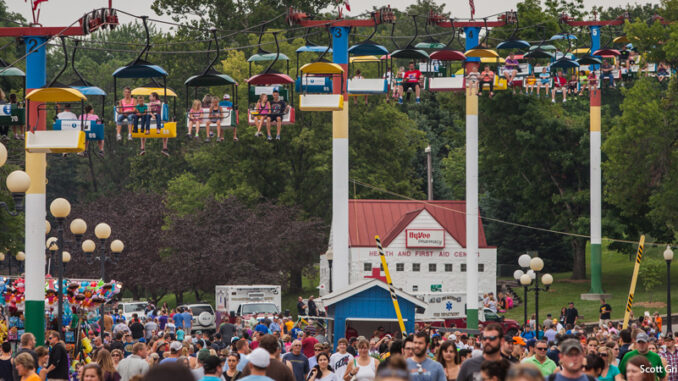
It’s August, and in many places, that means one thing: state fair time! Many people love state fairs for their rides, displays, and wide variety of unusual foods (deep-fried peanut butter and jelly sandwiches, anyone?). Here, btw takes a look at the annual summer ritual of state fairs in the United States, and how they have evolved over time.
Early Beginnings
The first state fair was held in 1841 in Syracuse, New York. Many people believe that the idea first originated in 1807, when Elkanah Watson, a wealthy farmer and businessman, showcased his sheep in the Pittsfield, Massachusetts town square. Over the next few years, Watson organized several agricultural societies around New England, and began hosting livestock competitions that awarded cash prizes. For this reason, he became known as the “father of U.S. agricultural fairs.”

From the beginning, state fairs have been a way for states to promote agriculture, by holding competitions and displaying farm merchandise. Even today, fairs remain a place for people to showcase everything from fruits and vegetables to livestock, in the hopes of being awarded a prize.
Growing and Changing
Over time, as industry grew and agriculture became less important, fairs evolved to keep up. In 1903, butter sculptures were introduced as an advertisement by the dairy industry. Later on, games and rides were added. Today, most fairs also draw crowds with musical concerts. Currently, over 3,200 fairs are held in North American each year. The most popular fairs take place in Alaska, Iowa, and Minnesota, with Minnesota hosting the largest state fair by daily attendance (the Texas state fair draws a larger overall crowd, but runs twice as long).
A Controversial History
Though state fairs are generally a beloved tradition, they have also faced their share of controversy. One of the most hotly-debated fair traditions is that of the freak show. Though such shows disappeared from the fair circuit for decades, they have made a comeback at some fairs in recent years.
Another important concern deals with the drugging of fair animals. In 1994, several steer at the Ohio State Fair were found to have been injected with substances to make their muscles appear larger. And two years ago, several contestants at the Indiana State Fair were disqualified and stripped of their awards for drugging their animals to improve their performance. State fairs in Illinois, Iowa, Kentucky, Nebraska, Texas, Missouri, Utah, and Louisiana have also had to disqualify winning animals for failing drug tests.
Some controversies have centered more around safety for the fairs’ human participants. Most recently, the Ohio State Fair made national headlines this summer when a ride called the Fireball broke down on opening day, killing one person and severely injuring several others. In the wake of the tragedy, the state closed down all other rides at the fair in order to conduct a thorough safety investigation.
Overall, though, state fairs remain a favorite summer event where visitors can view prizewinning livestock, try thrilling rides, indulge in unusual foods, and enjoy the best of what their states have to offer.
